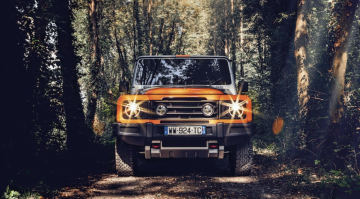INEOS Football invests in three new pitches to help OGC Nice raise its game in training
ONE of the oldest football clubs in French history has rebuilt its three pitches from scratch with the help of a British groundsman known as The Grass Professor.
Scott Brooks, who has worked at the national centre of the English Football Association, arrived at OGC Nice in January with high expectations for himself and also the club, which finished fifth in Ligue 1 last season.
“The grass was not very healthy at all,” he said. “And two of the three pitches couldn’t meet the performance level that I felt was required for a professional athlete.”
By performance level, Scott means a pitch that allows players to train and play without getting injured.
“A poor pitch is probably more than half of the reason why a player would get injured,” he said. “And the injury rates here were very high.”
Today all three pitches have been replaced with surfaces that allow the club’s talented players to train harder, for longer.
“We should now start seeing fewer injuries and fitter, healthier players,” he said. “Players need to come off the pitch tired after giving it everything, but without any pain.”
In doing so, OGC, which was founded in 1904, has also become the first French club to use a hybrid pitch - part synthetic, part real grass.
The grass is built on a layer of gravel and two layers of sand, each one levelled with a laser.
The top level of fine sand is mixed with an organic product that is derived from animal dung to provide the grass with the nutrients it needs to grow.
It is also the first French club to adopt a new, more efficient watering system, which uses 30% less water.
“They use the system to watermelons in Brail which has a similar, dry climate, so I am hoping it will work well here,” he said.
What Scott had discovered on his arrival at OGC Nice was a very basic irrigation system fed from the mountains.
“It doesn’t rain very often here but when it does, we get a month’s rain in a day,” he said.
Today, holding water tanks have been installed.
“If there is a problem with water in the city, we will have enough water stored on site to keep the pitches alive,” he said.
That matters in a part of the world where growing grass isn’t easy.
“I actually think the South of France is one of the most difficult climates for growing grass because we never really have perfect weather for a prolonged period,” he said.
“The pitches might be very, very good in April or May, or again in October, but they're not perfect every month for the season. My biggest challenge is creating a pitch that's good for every month of the season.”
Scott has also increased the pressure of the water so that it covers the whole surface of the pitch evenly.
“I can put the sprinklers on just five minutes before training and everything will be perfect,” he said.
In the past, the pitch needed to be watered for about 45 minutes before the players came out and often during training.
Bob Ratcliffe, CEO of club owners INEOS Football, described Scott as meticulous, dedicated and determined. “He has a wealth of expertise which should help the team at OGC Nice,” he said. And that’s Scott’s goal too.
“If you think the team performed very well this season, just think what they can now do next season,” he said.
OGC Nice is one of the founding members of the French football league and has four league titles to its name. But the club’s last cup triumph was in 1997.
Patrick Vieira, who has played for Juventus, Inter Milan, Manchester City and Arsenal, is head coach.
Scott said Patrick, who is considered one of the best players of his generation, would also struggle to achieve results on a poor pitch.
“The pitch is critical if you want a player to achieve his potential,” he said. “A good quality can give a player the confidence to try new things in training.”
Today there is very little difference between the training ground and the pitch inside the stadium at Allianz Rivera. And that’s how it should be, says Scott.
“Consistency is key in the pitches that you train on and the pitches that you play on,” he said. “That's the whole point of home advantage. If you train on the pitch all week and you go and play on the same pitch at Allianz Riviera, then you'll adapt very quickly and your performance level will be higher.
“If you trained here on a very good pitch and then went to a stadium and the pitch wasn't at the level of the training pitch, then it takes you 10, 15 minutes to adapt to it and that could be the difference between winning a game and losing the game.”
www.ogcnice.com
Football kicks off again
INEOS’ two top football teams are now back in action. But for now, FC Lausanne-Sport and OGC Nice are playing all their matches behind closed doors due to COVID-19.
“We have missed being on the pitch so it’s brilliant to be playing again,” said OGC Nice coach Patrick Vieira.
“But we do feel that lack of atmosphere. It’s tough to play in these conditions.”
Later this year FC Lausanne-Sport, one of the oldest football clubs in the world, will move from its home of 66 years to a new 12,000-seater stadium.
INEOS Football, which bought the Swiss club in 2017, said it had created an exciting atmosphere for both players and fans.
The Tuiliere complex boasts nine pitches – two grass and seven synthetic.
These extra pitches provide training and match facilities not only for Lausanne Sport, but also for other local Lausanne teams.














